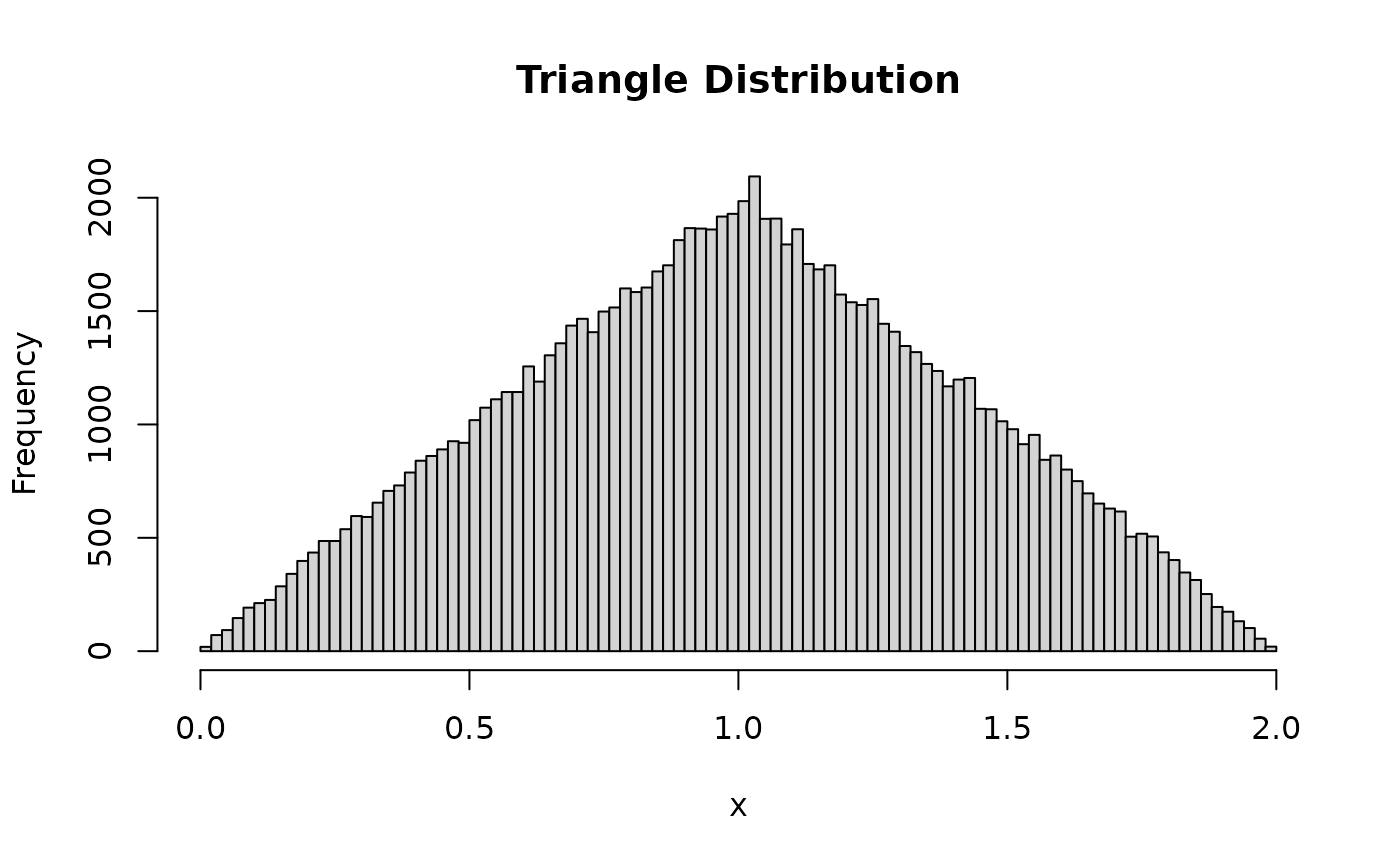These functions provide information about the triangle distribution on the
logarithmic interval from a to b with a maximum at c. dltriangle
gives the density, pltriangle gives the distribution function,
qltriangle gives the quantile function, and rltriangle generates
n random deviates.
Usage
rltriangle(
n = 1,
a = 1,
b = 100,
c = 10^((log10(a) + log10(b))/2),
logbase = 10
)
dltriangle(x, a = 1, b = 100, c = 10^((log10(a) + log10(b))/2), logbase = 10)
pltriangle(q, a = 1, b = 100, c = 10^((log10(a) + log10(b))/2), logbase = 10)
qltriangle(p, a = 1, b = 100, c = 10^((log10(a) + log10(b))/2), logbase = 10)Arguments
- n
number of observations. If
length(n) > 1, the length is taken to be the number required.- a
lower limit of the distribution.
- b
upper limit of the distribution.
- c
mode of the distribution.
- logbase
the base of the logarithmic scale to use (default to 10)
- x, q
vector of quantiles.
- p
vector of probabilities.
Value
dltriangle gives the density, pltriangle gives the
distribution function, qltriangle gives the quantile function, and
rltraingle generates random deviates. Invalid arguments will
result in return value NaN or NA.
Details
All probabilities are lower tailed probabilties. a,
b, and c may be appropriate length vectors except in the
case of rtriangle.
References
Becker, R. A., Chambers, J. M. and Wilks, A. R. (1988) The New S Language. Wadsworth & Brooks/Cole.
See also
.Random.seed about random number generation,
runif, etc for other distributions.
